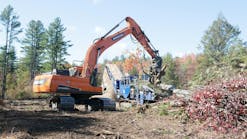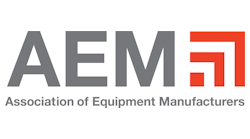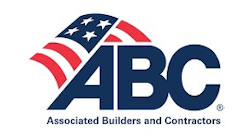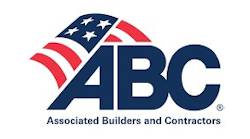As skid-steer loader attachments go, a grader with a laser control system is one of the higher-priced choices. But in the right hands, it can be a real moneymaker by offering a speedy way to slash labor and material costs on concrete flatwork, asphalt, curb and gutter, and landscaping jobs. Consider the experience of two contractors: Laser Grade Inc. of Las Vegas and Fryling Construction of Vicksburg, MI. Both use laser-equipped Bobcat graders, which feature a 7-ft., six-way, hydraulically controlled moldboard. In fact, Lance Coté, a former concrete flatwork contractor, developed Laser Grade, a company he started six years ago around the attachment. He uses it with a 46-hp Bobcat 773 skid-steer loader (1,750-lb. rated operating capacity) to spread and grade gravel and sand for concrete flatwork contractors. His projects range from convenience stores to a 200,000-ft.2 warehouse. He once used this equipment to grade 2 in. of sand as it was being brought in for a 100,000-ft.2 slab in one long day. On another high-production day, he graded 100,000 ft.2 of 3/4-in. rock that was already in place on a pad. “Normally a grading contractor is required to rough grade a pad site to within plus or minus one-tenth of a foot of grade,” he explains. “When a crew prepares the final grade by hand, they’re lucky if they can get it within plus or minus a half-inch of grade. Before I leave a job, I check my work with the superintendent. If it’s not within plus or minus one-eighth of an inch, I do it over. When it’s done, it’s the grade the customer wants.” Fryling Construction has been using a laser-controlled Bobcat grader to prepare sites for concrete slabs and asphalt parking lots and to cut drainage ditches for about 14 years. Before buying the attachment, Jack Fryling used a skid-steer loader and bucket to grade and backdrag a site and hand tools to set the final grade. The laser-grader attachment has eliminated four to five laborers and does the job faster and more precisely, he reports. “It saves a whole bunch of time. The first two jobs paid for the grader.” The company uses the laser-controlled Bobcat attachment with a 46-hp Bobcat 763 loader (1,500-lb. rated operating capacity) equipped with flotation tires and a 73-hp 863 model (1,900-lb. rated operating capacity). After a site has been rough graded to within 1/10 ft. of final grade, the skid-steer loader and grader usually make three passes, automatically fine tuning the grade to within plus or minus 1/8 in. of final grade, says Jack’s son, Cary. “That degree of accuracy saves a tremendous amount of concrete, compared to doing the job by hand. Once we get the site to within a half inch of grade, we can regrade to the final grade very quickly.” One recent job involved preparing and pouring a 125,000-ft.2 warehouse slab in typical fashion. Each day the crew final grades and sets the steel for the next day’s work, usually about 150 yd. of concrete. “As the dozer rough grades the site, the grader keeps up with setting the final grade for each day’s pour,” Cary relates. The laser-grader unit also performs well in preparing parking lot sites, Jack adds. “With the laser system, we can establish multiple planes to make water go where we want it. With good gravel and good compaction we can produce a very smooth, compacted plane with no low areas. This lets water run off quickly, which allows the grade to hold for two or three years, if necessary, before laying the asphalt.”








